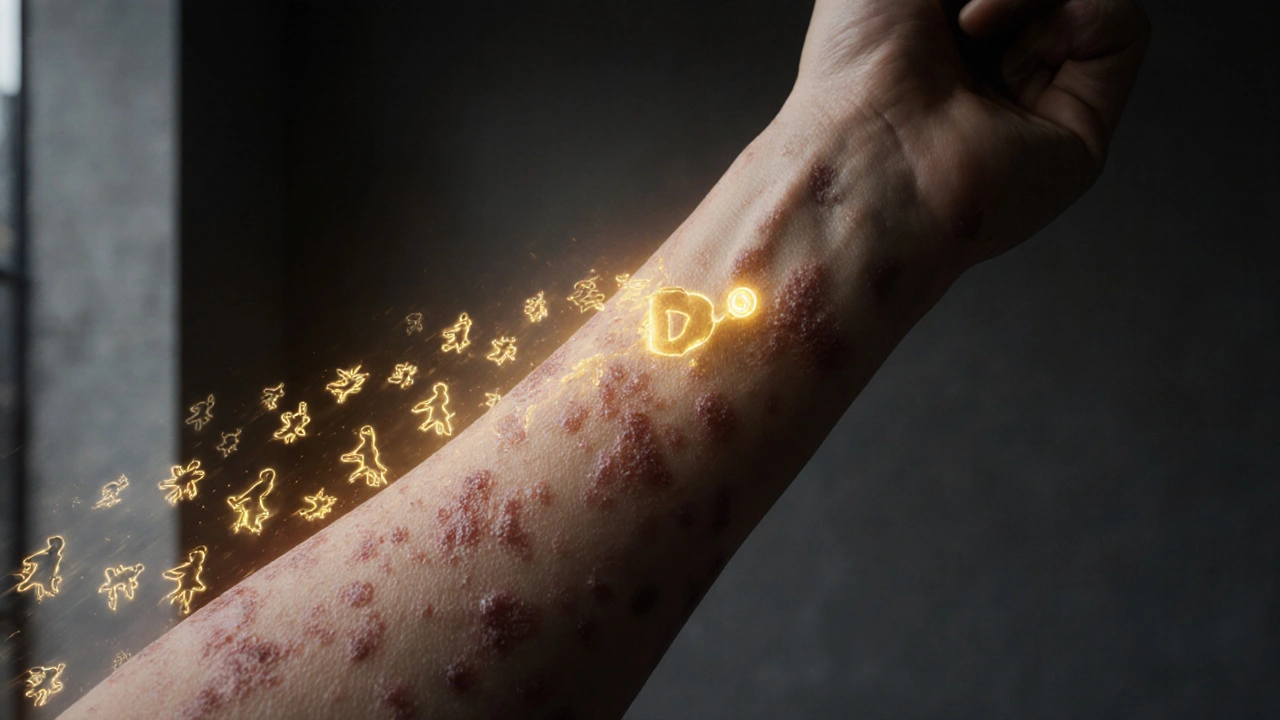Calcipotriene is a vitamin D-based topical treatment that slows skin cell overgrowth in psoriasis. It reduces scaling and inflammation without the side effects of steroids. Works best with consistent use over 6-8 weeks.
Topical medication: How to use creams, gels and patches safely
Topical medication treats skin and nearby tissues without pills. Think creams, ointments, gels, sprays and patches. They deliver medicine right where you need it, so side effects can be lower than oral drugs. But "applied" doesn't mean "risk free."
Start by checking the label. Look for the active ingredient, concentration, and whether it's for short or long term use. For common problems you'll find hydrocortisone for itching, antifungal creams for athlete's foot, antibiotic ointments for minor cuts, and topical NSAID gels for muscle pain. Prescription topical meds include steroid creams, retinoids and medicated patches.
How to apply topical medication the right way
Clean and dry the area before you apply anything. Use a thin layer unless your doctor tells you otherwise - a pea sized amount often covers the right area. Rub creams and gels in gently; leave ointments to sit if they're meant to form a barrier. Don't cover the area with bandages unless the product or your provider says to do so.
Wash your hands before and after, unless your treatment is for the hands. Avoid touching eyes, mouth or genitals after handling most meds. If you need to use two topical products, ask your doctor about timing; sometimes you should wait 10-20 minutes between applications so one doesn't block the other.
Safety, side effects and when to call a doctor
Redness, stinging or mild irritation can happen. Stop use and call your provider if you get severe irritation, swelling, blisters or signs of infection like pus and spreading redness. Some topical drugs still enter the bloodstream. Children, pregnant people and those with large treated areas should get medical advice first.
Be careful with occlusive dressings, heat and exercise after applying heat-sensitive products - they can boost absorption and increase side effects. Also check interactions: combining certain topical steroids with other medicines can raise risks.
Store topical meds away from heat and sunlight, usually at room temperature. Check expiration dates - creams and solutions can lose potency or grow bacteria. Don't share prescriptions and don't use leftover medication for a new problem without checking a clinician.
Choosing OTC versus prescription often comes down to strength and diagnosis. If an over-the-counter product doesn't improve symptoms in a week or two, or the issue keeps returning, see a clinician. For chronic skin diseases like eczema, psoriasis or acne, a treatment plan from a provider gives better long term results than switching products at random.
Topical medication can be very effective when used correctly. Read labels, use the right amount, and ask your pharmacist or doctor when you're unsure. Little changes in how you apply a cream or choose a product make a big difference in results and safety.
Want more practical tips or product reviews? Browse our guides on choosing topical antibiotics, antifungals, steroid creams, and medicated patches. You'll find clear comparisons, safety notes, and buying tips so you pick the right product without guesswork and avoid common mistakes today.
Calcipotriol is a vital component in treating skin conditions, especially psoriasis. This article explores the different forms in which calcipotriol is available, its uses, and the benefits it offers to patients. Understanding these variations can help in selecting the appropriate treatment. The article also delves into potential side effects and how to effectively incorporate calcipotriol into a skincare routine.


